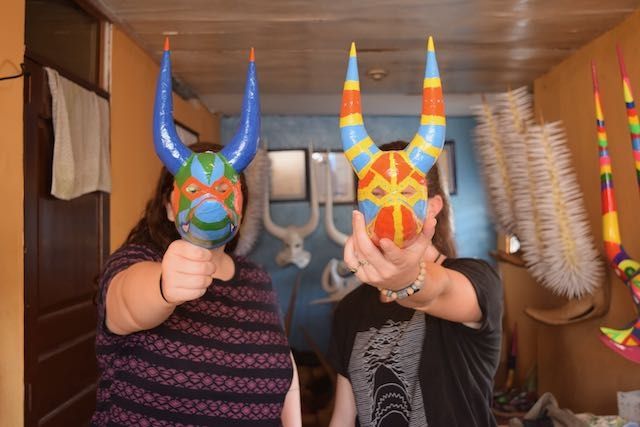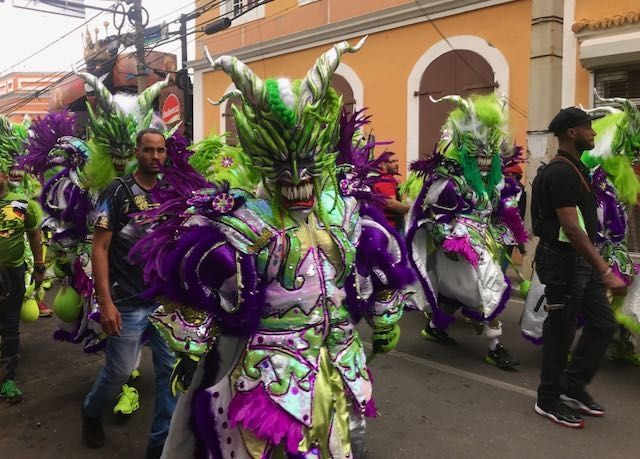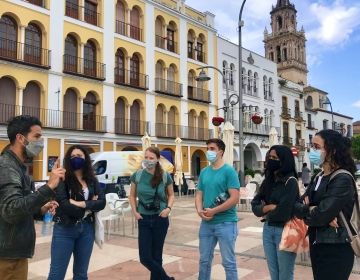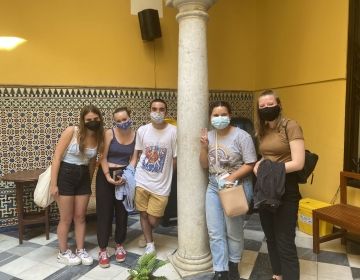Carnival Characters: Mask-Making Workshop
Hey y'all!
Have you ever heard of Carnival? I'm guessing that your mind first jumped to Rio de Janeiro and its Carnival. Carnaval dominicano is different, with its own particular history, but is also filled with color and music. February is the month of Carnival in the Dominican Republic, with towns all over the country celebrating every Sunday afternoon. The first recorded carnival in the Dominican Republic was held in La Vega in 1510. For many years, people who were enslaved were encouraged by their enslavers to celebrate Carnival because it was an opportunity to let loose once a year and theoretically served as a distraction from the horrors of slavery. The enslavers were Christian and incorporated some Christian elements into the celebration, including its approximate celebration before Lent, or cuaresma. Over the years, the purpose of Carnival changed. When the Dominican Republic gained independence from Haiti on February 27th, 1844, independence celebrations were built into the Carnival celebrations. The popularity of Carnival continued to grow, and despite fluctuations in participation and various attempts to control it by politicians, today it maintains its significance to Dominican culture.
One of the most notable parts of the carnaval dominicano is the presence of various masked or costumed characters. The main character is El Diablo Cojuelo, or "limping devil," and its variations. Every town or region has its own characters, as well, which each have their own backstory and importance as well. Nearly all the characters are very elaborately costumed, and the costumes and masks are generally handmade by artisans. The most characteristic costume in the Santiago carnival is that of the lechones, a take on the limping devil. They carry verjigas (originally inflated cow bladders, hence the name), as do many of the devil characters, in addition to rope whips which they snap loudly as they walk. The lechones wear masks with a nose and horns which are loosely based on stylized pig heads. Each neighborhood has a slightly different variation on the shape of their mask and its decorations. In Los Pepines, for example, the horns have little spikes coming off of them; in La Joya, the horns are left smooth. The masks are made by first forming a mold out of clay, or barro, before covering it in paper mache. The paper mache, once dry, is removed and filled with plaster to create a reusable mold. The masks are actually paper mache, usually made with crepe paper, and are decorated with paint, spikes, flowers, and all sorts of other accessories.
As one of our cultural mentoring activities, we had the opportunity to visit an artisan named Juan Pascual who has been making Carnival masks for over 40 years. He explained the process of making the masks and showed us around his workshop so that we could see more of the various works-in-progress. To top it all off, we had the chance to paint our own mini-lechón masks! Before beginning to paint, we asked if the specific designs painted on carried special meaning (so that we could avoid misusing them, if so). We learned they generally don't and are instead just the result of the artist's imagination at the time. With that in mind, we began to paint. I chose to freehand mine, while Hazel drew her pattern out before beginning to add color. When we finished, we agreed each of our masks was a good reflection of our own personal styles. Our cultural mentor Laura, meanwhile, was crafting her own mini-mold– which was not nearly as easy as Juan Pascual had made it look.
Over our time here in the Dominican Republic, we've had the opportunity to not only learn about the history of Carnival but to visit the celebrations in Santiago and La Vega. It was amazing to see the vibrance of the people and the characters come to life on the streets. Although the main month of Carnival is now over, we are continuing to learn more about other aspects of Dominican culture and history, and I encourage you to do the same.
'Til next time!
Grace
Related Posts
GAP & HSA: palaces & gastronomy in Écija & Osuna, Sevilla
Our GAP and HSA students got to visit these wonderful towns before they departed back to the States. Ecija is known as the City of Towers. Located in the centre... keep reading
It´s not goodbye, it´s hasta luego
Our GAP program ended last week and althought we are sad to see our participants go, we are extremelly happy to have been able to offer a program that offers... keep reading
Exploring medieval castles in Sevilla
Our GAP students got the opportunity to explore two of the most important towns in the province of Seville: Alcalá de Guadaira and Utrera. Alcalá’s castle is the result of... keep reading














